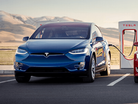The Global Lithium-Ion Battery Supply Chain Ranking

Strategic research provider BloombergNEF has released the Global Lithium-Ion Battery Supply Chain Ranking, an annual assessment that rates 30 countries on their potential to build a secure, reliable, and sustainable lithium-ion battery supply chain.
The fourth edition of the research reveals that Canada has taken the number one spot from previous holder China.
46 individual metrics are considered to track the supply chain potential across five equally weighted categories, ranking per category and overall. The categories are:
- raw materials
- battery manufacturing
- downstream demand
- ESG considerations
- industry, infrastructure and innovation
This edition marks the first time that China has not held the top spot, with Canada’s consistent manufacturing and production advances, and strong ESG credentials helping it become a leader in forming the battery supply chains of the future.
“For the first time, China is not the top market in BloombergNEF’s ranking of countries’ potential to build a secure, reliable and sustainable lithium-ion battery supply chain. It has been dethroned by Canada, whose continued growth across all areas of the supply chain and consistent performance in the metrics being assessed have given it an edge over competitors,” says Kwasi Ampofo, Head of Metals and Mining at BNEF.
“Clear policy direction and commitment in North America have been key to the region’s rising supply chain potential. Canada and the US both sit in the top three of the global ranking.”
Expert report insight
Kwasi Ampofo has been at BNEF for over five years, where he is now Head of Metals and Mining. In 2017, he gained his PhD in Mineral Economics from the University of Queensland, where he remained as a Postdoctoral Research Fellow in Energy Economics for a year.
“Global investment in the clean energy supply chain, including equipment factories and battery metals production, hit a new record at $135 billion this year. That said, trade relations will be an interesting factor to monitor in 2024, as foreign policy efforts in the US and EU continue to make it difficult for international companies to operate in major markets like China,” Ampofo says.
“The key word to describe the global mining industry over the next few years is growth. The amount of metals going into the production of lithium-ion batteries has grown from 1.3m metric tons in 2020 to 3.7m in 2023,” he shares with Mining Digital.
“This will reach 16.8m in 2030.
“There were really no unexpected results in the report — one key take home was the importance of countries being consistent across the supply chain, especially as lithium industry is still at its early stage of growth. It is no more enough to simply excel at mining, as an example, with little focus on infrastructure.
“Chile, Argentina, China and Nigeria are countries to watch as their mining and refining capacity will increase this decade.”
******
Make sure you check out the latest industry news and insights at Mining Digital and also sign up to our global conference series - Manufacturing LIVE 2024
******
Mining Digital is a BizClik brand
*************



